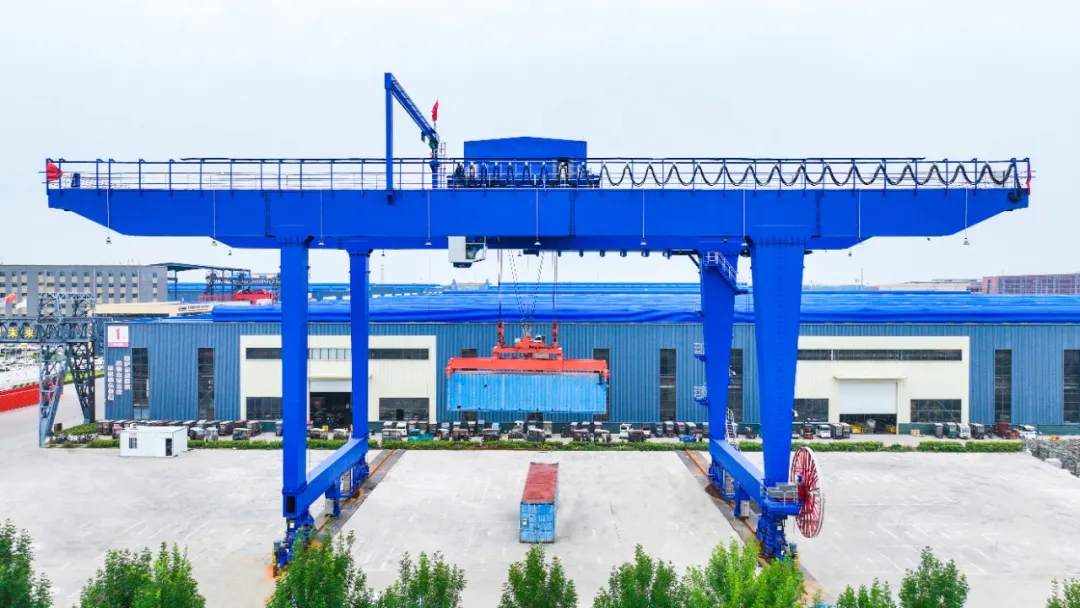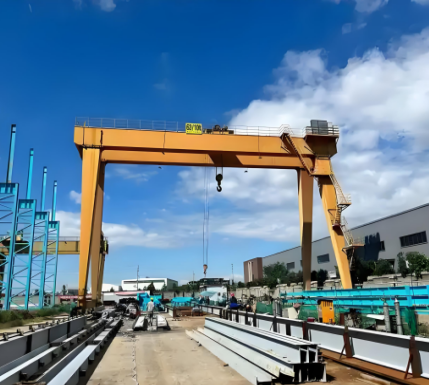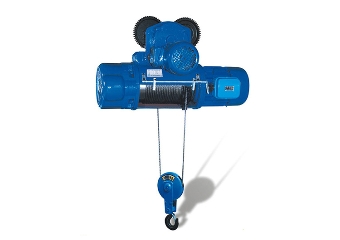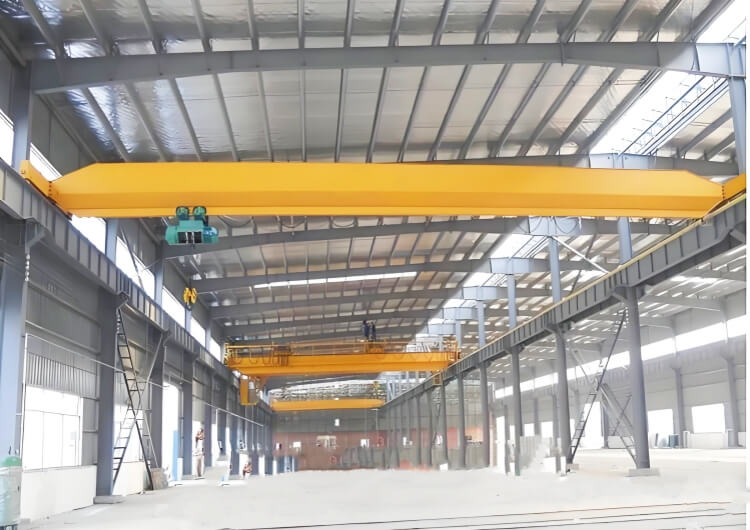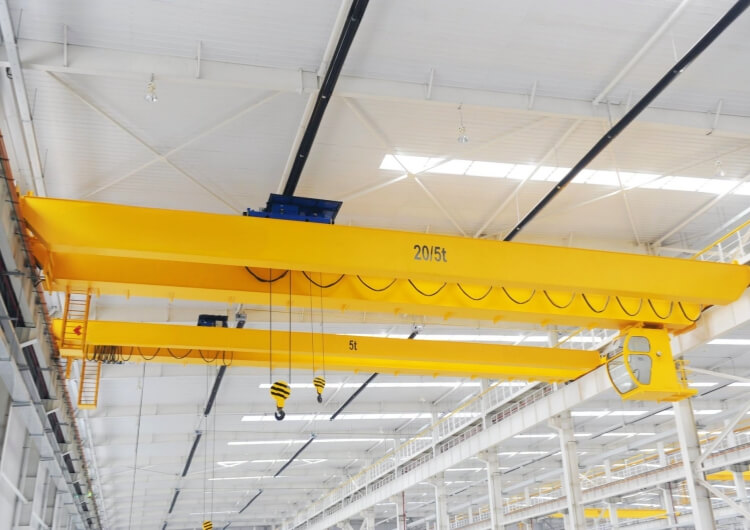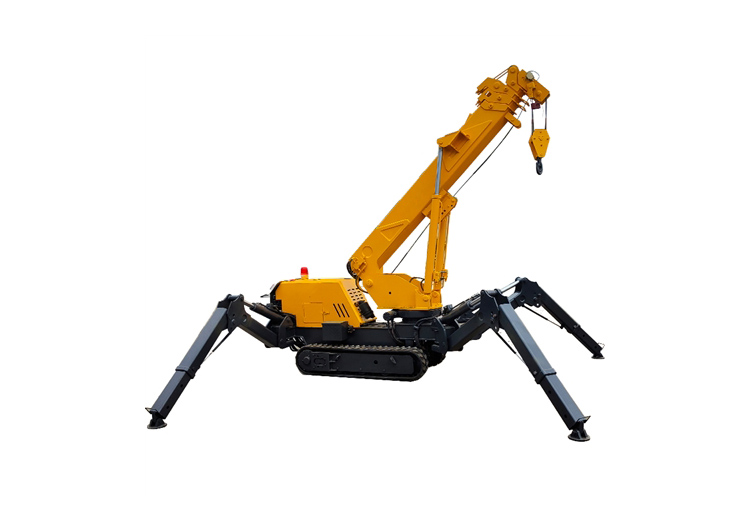Electric Hoist Troubleshooting: Common Causes and Effective Solutions
Electric hoists are indispensable lifting devices in modern industry. Compact in size yet powerful in capacity, they are widely used in factories, warehouses, construction sites, and logistics facilities. By ensuring safe and efficient material handling, they significantly improve productivity.
However, when an electric hoist breaks down, the consequences can be severe—production lines may stop, projects may be delayed, and in worst cases, equipment failure can cause load slippage or even personal injury. That is why understanding the most common electric hoist faults, their root causes, and practical troubleshooting methods is crucial for every operator or maintenance engineer.
Five Common Electric Hoist Failures and How to Solve Them
1. Hoist Fails to Start
When your electric hoist does not respond, the typical causes include:
-
Power supply issues: no power, unstable voltage, or loose wiring connections.
-
Motor problems: burned windings due to overload or seized bearings.
-
Control circuit faults: damaged wires, aged insulation, or oxidized contactors.
-
Limit switch malfunction: misalignment triggering unnecessary stop protection.
Solutions:
Check the distribution box and measure voltage with a multimeter; inspect the motor for signs of overheating or damaged bearings; repair or replace faulty contactors or wires; adjust or replace misaligned limit switches.
2. Abnormal Noise During Operation
Unusual noises such as grinding, knocking, or rattling often indicate mechanical problems:
-
Lack of lubrication in gears and bearings.
-
Gear wear, broken teeth, or incorrect gear clearance.
-
Damaged bearings with worn balls or distorted rings.
-
Wire rope or chain defects such as broken strands, kinks, rust, or stretched pitch.
Solutions:
Apply suitable lubricants to gears and bearings; check and replace worn gears; replace defective bearings; change damaged chains or ropes and lubricate after cleaning rust.
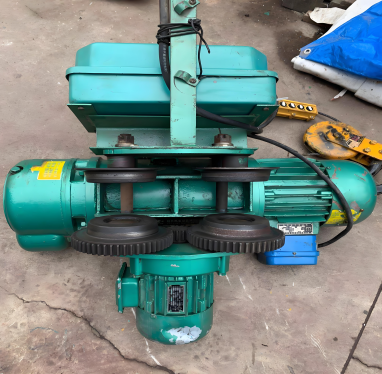
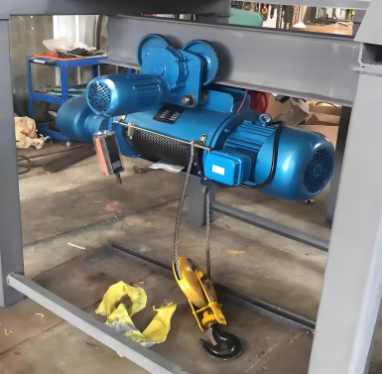
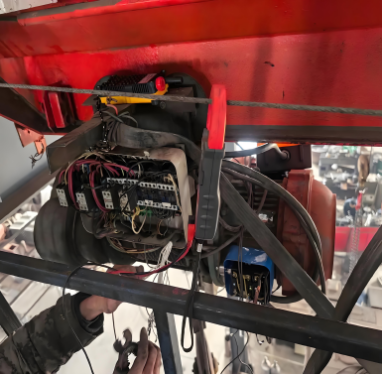
3. Brake Failure or Weak Braking
A brake system malfunction can cause the load to slip and lead to dangerous accidents. Common causes include:
-
Worn or oil-contaminated brake pads.
-
Broken or weakened brake springs.
-
Deformed brake wheel or uneven contact surfaces.
-
Excessive brake clearance or insufficient travel.
Solutions:
Inspect the brake housing and replace worn or contaminated pads; change broken springs; grind slightly deformed wheels or replace severely damaged ones; adjust brake clearance according to the manual (usually 0.5–1 mm).
4. Abnormal Lifting or Lowering Speed
If the hoist speed is too fast, too slow, or unstable, the reasons could be:
-
Incorrect motor wiring or burned motor coils.
-
Faulty gearbox with worn gears, oil shortage, or wrong transmission ratio.
-
Control device issues such as misconfigured frequency inverter or faulty speed control switch.
Solutions:
Correct motor wiring; check the gearbox for wear, add lubrication, or replace parts; reset inverter parameters or replace defective control switches.
5. Chain or Wire Rope Jamming and Misalignment
Chain or rope derailment often happens due to:
-
Deformed track or uneven joints.
-
Damaged chain links or distorted wire ropes.
-
Faulty guide wheels with excessive wear, seized bearings, or incorrect alignment.
-
Improper assembly of lifting components causing uneven force.
Solutions:
Stop the hoist immediately; correct or replace deformed tracks; change damaged chains or ropes; lubricate or replace seized guide wheels and realign them; reinstall lifting assemblies according to the manufacturer’s drawings.
Preventive Maintenance Measures
To reduce downtime and extend equipment lifespan, follow these best practices:
-
Pre-operation inspection: Check the power supply, motor temperature, brake pads, and chains/wire ropes before every shift.
-
Scheduled maintenance: Lubricate gears and bearings, tighten bolts, and clean dust monthly or according to the manual.
-
Safe operation: Avoid overloads, sudden stops, or improper handling.
-
Environmental protection: Prevent exposure to moisture, dust, or corrosive atmospheres; install protective covers or rain shields if necessary.
Why Choose SLKJCrane Electric Hoists?
SLKJCrane manufactures electric hoists with high-strength steel, premium motors, and strict quality control. Every unit undergoes multiple inspections to ensure reliability. Our solutions are customizable to match your factory conditions, guaranteeing safe and efficient operations.
👉 Learn more about our products here: SLKJCrane – Your Premier Choice for Electric Hoists
Conclusion
Troubleshooting an electric hoist requires identifying whether the fault is mechanical, electrical, or related to safety systems. By understanding the most frequent problems—failure to start, abnormal noise, brake issues, irregular speeds, or chain jamming—you can quickly apply effective solutions. Combined with preventive maintenance and safe operation practices, you will minimize downtime, extend equipment service life, and ensure safe material handling across all industrial applications.

Expert in Overhead Crane/Gantry Crane/Jib Crane/Crane Parts Solutions
Eileen Hu
With 20+ years of experience in the Crane Overseas Export Industry, helped 10,000+ customers with their pre-sales questions and concerns, if you have any related needs, please feel free to contact me!
Intermodal Gantry Cranes (RMG & RTG) — Engineering Playbook
Intermodal Gantry Cranes (RMG & RTG) — Engineering Playbook This engineering-oriented guide targets rail-to-truck operations, inland ports (ICDs),
Electric Hoist Gantry Crane: Complete Sizing & Selection Guide | SLKJCrane
Electric Hoist Gantry Crane: A Complete Sizing & Selection Guide Choosing the right electric hoist gantry crane comes
MG Double Girder Gantry Crane with Hook | Heavy-Duty Outdoor Lifting
MG Double Girder Gantry Crane with Hook: Structure, Specs & Applications An MG double girder gantry crane with
Steel Mill Wire Rope Lubrication for Metallurgical Hoists | Cut Downtime by 41%
Steel Mill Wire Rope Lubrication for Metallurgical Hoists: Root-Cause Fix & Proven Results Wire rope failures in steel
Contact Us Now
Have questions about our cranes or need help?
Reach out to our friendly team for expert support and guidance.
We are here to help you power your journey towards a greener future !
Address: Crane Industry Park, Xinxiang City Henan Provice

